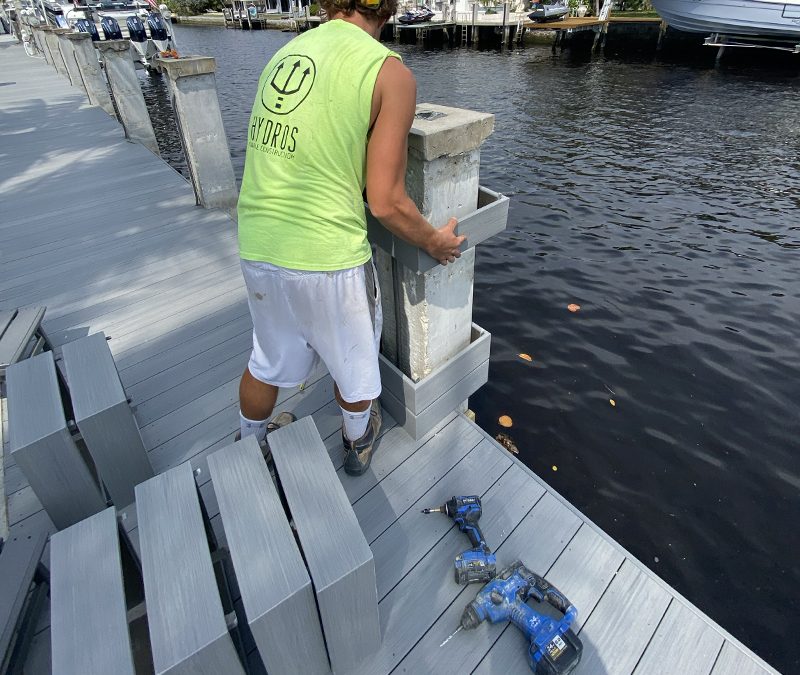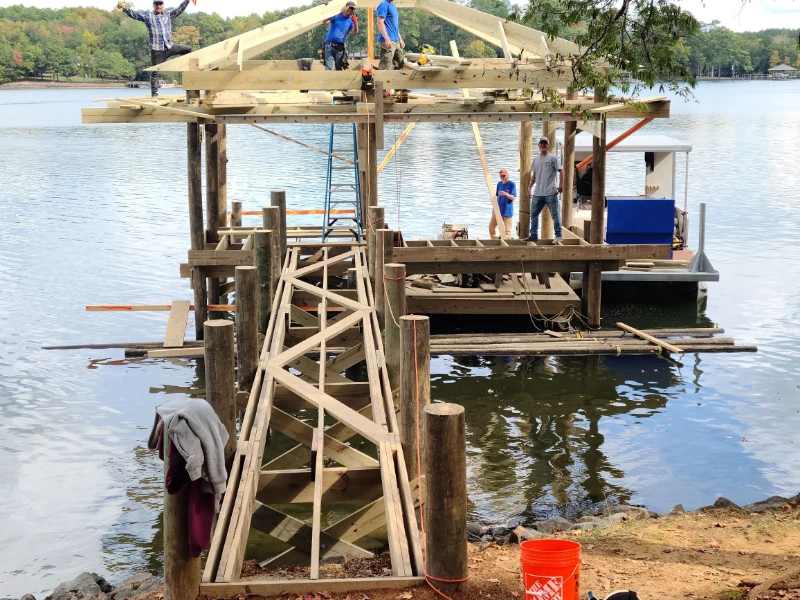Usual Issues That Result In Expensive Dock Repairs
Usual Issues That Result In Expensive Dock Repairs
Blog Article
Efficient Dock Repair Work Techniques: Guaranteeing Architectural Stability
Making certain the structural honesty of docks via efficient fixing strategies is vital for the longevity and security of aquatic facilities. Consequently, selecting the ideal repair work products, such as composite materials and corrosion-resistant alloys, is vital for sturdiness.
Analyzing Dock Damage
Analyzing dock damage is an essential primary step in making certain the structural stability and safety and security of any docking facility. This preliminary evaluation involves a comprehensive assessment to identify both surprise and visible damages. Trick aspects to analyze include the dock's structure, pilings, outdoor decking, and hardware. Each element needs to be looked at for indicators of wear, rot, deterioration, or various other forms of deterioration that might jeopardize the structural stability.
Structural engineers or qualified examiners commonly perform these evaluations utilizing specialized tools and methods. For example, undersea examinations could utilize sonar equipment or from another location operated cars (ROVs) to discover submerged damage. Above water, visual examinations are enhanced by utilizing wetness meters and various other diagnostic tools to discover underlying problems not right away visible to the nude eye.
Finding Fixing Materials
Choosing the suitable repair service products is a crucial action in the dock restoration process, one that directly affects the longevity and performance of the repaired framework. Material selection must be driven by elements such as environmental conditions, load-bearing demands, and compatibility with existing dock elements. As an example, timber is a conventional option for docks because of its natural durability and aesthetic appeal. Choosing the right kind of timber, such as pressure-treated lumber or normally rot-resistant types like cedar or teak, is vital to hold up against water environments.
Along with timber, composite materials are significantly preferred because of their resilience and reduced maintenance requirements. Composites, typically made from a mix of plastic and wood fibers, supply outstanding resistance to rot, pests, and UV damage. For steel docks, picking corrosion-resistant alloys such as galvanized steel or marine-grade aluminum is vital to prevent corrosion and make certain structural integrity in saline water conditions.
Epoxy materials and marine-grade sealers are essential for fixing fractures and securing joints, supplying a water resistant barrier and improving the dock's total strength. By carefully picking high-quality products, dock fixings can achieve resilient outcomes, thereby protecting against future deterioration and making sure risk-free, trusted use.
Architectural Reinforcement Methods
Reliable architectural support methods are critical in ensuring the stability and durability of dock fixings. This approach is specifically reliable for anchors revealed to hefty lots or rough ecological problems.
An additional necessary strategy is the application of fiber-reinforced polymers (FRP) These materials use high strength-to-weight proportions and superb resistance to deterioration, making them excellent for enhancing concrete or wooden docks. FRP can be applied in strips or sheets and bound with epoxy resins to enhance architectural stability.
Bracing and anchoring systems additionally play a crucial duty in architectural support. Cross-bracing, utilizing metal or wood beam of lights, can counteract side forces, decreasing guiding and activity. Anchoring systems, such as helical piers or driven heaps, supply a steady foundation by moving tons to deeper, extra steady dirt layers.
Finally, the combination of load-distribution plates can help disperse weight a lot more equally across the dock's surface area, alleviating localized stress and anxiety points. These techniques jointly guarantee that look at this website anchors stay robust and safe, with the ability of standing up to the roughness of their functional atmosphere.
Advanced Repair Service Techniques

One more innovative strategy involves undersea welding, which enables fixings to be conducted without the need to dewater the area. This technique is specifically helpful for attending to architectural issues in immersed dock parts, guaranteeing very little disturbance to operations. Improved welding strategies, combined with robotic systems, deliver precision and integrity, thereby extending the life expectancy of the dock.
Additionally, cathodic protection systems are carried out to avoid rust in metallic dock structures. By utilizing sacrificial anodes or amazed existing my site systems, these methods effectively minimize the electrochemical processes that lead to material wear and tear.
Finally, advanced tracking innovations, such as structural health and wellness surveillance (SHM) systems, provide real-time data on the problem of dock structures. These systems allow proactive maintenance and prompt treatments, inevitably ensuring the long-lasting structural honesty of the dock.
Maintenance and Avoidance
Maintenance and avoidance are essential principles that underpin the durability and safety and security of dock frameworks. Regular assessments are paramount, enabling very early detection of wear and tear, potential weaknesses, and ecological influences. An aggressive method, involving routine checks for deterioration, rot, and structural shifts, reduces costly repairs and lengthens the dock's operational life.
Preventive measures must include using safety important site coverings to metal components to safeguard against rust and making use of cured timber to withstand decay. In addition, guaranteeing correct drainage and ventilation can avoid water accumulation, which is an usual root cause of structural destruction. Including quality materials and sticking to producer standards throughout construction and repair service stages also play vital roles in boosting sturdiness.

Educating workers in dock maintenance ideal practices makes certain consistent application of safety nets. Leveraging technical developments, such as drones for inspections and sensors for real-time monitoring, can further improve upkeep efforts. By prioritizing maintenance and avoidance, dock proprietors can ensure architectural honesty, functional security, and cost-effective management over the dock's lifespan.
Verdict
To conclude, preserving the architectural honesty of aquatic centers demands detailed dock repair service methods. Detailed examinations making use of innovative tools uncover both noticeable and hid damages, while the selection of suitable repair products enhances durability. Applying structural reinforcement techniques addresses stress and anxiety factors successfully. Advanced repair work techniques, paired with regular maintenance methods, guarantee the dock stays secure and operational under diverse ecological conditions. Adopting these approaches considerably prolongs the lifespan and functionality of marine framework.
Ensuring the structural honesty of anchors via effective repair techniques is vital for the durability and safety and security of marine centers.Picking the proper fixing materials is a pivotal step in the dock reconstruction procedure, one that straight influences the long life and efficiency of the repaired structure.Efficient architectural reinforcement techniques are essential in guaranteeing the security and long life of dock fixings. By prioritizing upkeep and avoidance, dock owners can guarantee structural integrity, operational security, and affordable management over the dock's life-span.
In final thought, keeping the architectural integrity of aquatic centers requires extensive dock repair service strategies.
Report this page